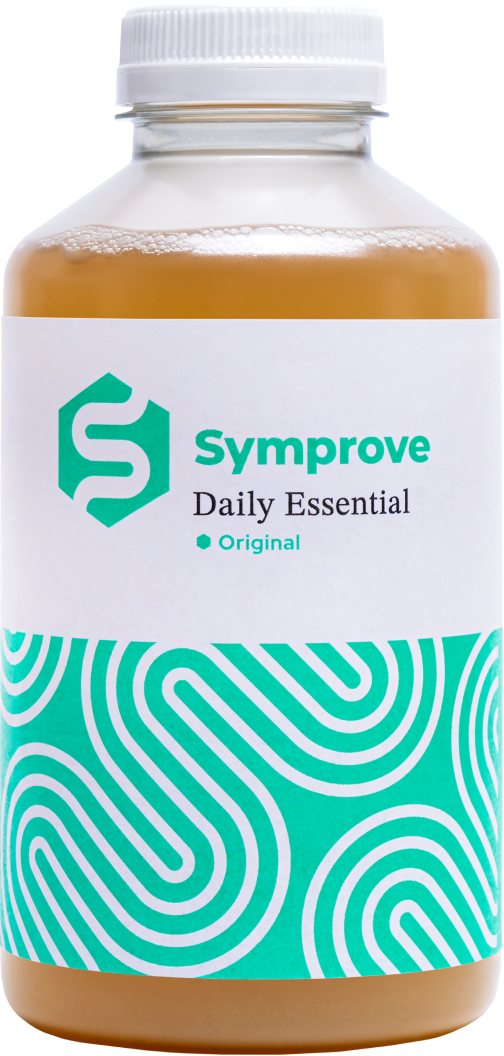Introduction
Coeliac disease is a multisystem autoimmune disorder that occurs in genetically susceptible individuals secondary to the consumption of a group of related plant proteins, collectively known as gluten. (1,2)
The prevalence of coeliac disease is generally accepted to be around 1% globally and its overall incidence, although there is geographical variability, appears to be increasing. (3) Equally variable is its clinical presentation with the now accepted distinction between classical and non-classical categories. While both these cohorts will have elevated coeliac antibodies, intestinal inflammation or villous atrophy - the former present with symptoms secondary to overt malabsorption, whilst the latter category of patients may appear asymptomatic, despite extra-intestinal signs and symptoms that can include, migraines, infertility, and ataxia amongst others. (4)
Untreated coeliac disease is also associated with increased risks in developing vitamin and mineral deficiencies, reduced bone density, other autoimmune conditions, as well as small bowel cancer - particularly lymphoma. (5) The only current treatment remains a strict lifelong gluten-free diet (GFD), which can entail a significant treatment burden for patients secondary to a high degree of vigilance of the food environment.
Due to the associated comorbidities and treatment burden that coeliac disease and the GFD represents there has been significant interest from both patients and healthcare professionals in alternatives or adjunctive therapies to the GFD, resulting in a significant international research effort to further clarify both the pathophysiology of coeliac disease and potential treatment modalities. (6,7)
One particular area of acute interest has been the role of human gut microbiome and the use of probiotics. (8–10)
The Microbiome in the Pathogenesis of Coeliac Disease
Over the last twenty years research on the human microbiome has increased exponentially, with US$1.7 billion being spent in the last decade alone. (11,12) The microbiome refers to both the microorganisms (or microbiota - bacteria, archaea, viruses, fungi) that inhabit a specific area in or on the body as well as, their genomes and metabolites, including proteins, lipids, polysaccharides and phages. (13,14)
Despite many significant developments, when discussing the role of the human microbiome in both health and disease it is important to acknowledge the available techniques for analysing both its composition and function (e.g. 16S rRNA gene sequencing) are still evolving and have limitations. (15,16) Clear definitions of a “healthy” microbiome or “dysbiosis” (compositional changes in the microbiota that may increase disease risk) do not yet exist and there is significant heterogeneity in the published literature, which has hampered the translation of microbial treatments into clinical practice. (17–21)
However, several studies have demonstrated the microbiota in patients with coeliac disease is compositionally altered, with the overall consensus suggesting an association with over-representation of pathobionts and deceased protective symbiont species. It is hypothesised, given the central role the human microbiome plays in the regulation of the immune system that these changes may contribute towards the pathogenesis of the disease. (22–25)
Specifically, studies in both children and adults indicate an increase in Bacteroides and Proteobacteria, and a decrease in Lactobacillus and Bifidobacteria potentially leading to a pro-inflammatory effect. (26–29) This may turn activate the innate immune system, via exposure to bacterial lipopolysaccharides and cytokines thus driving mucosal inflammation and compromising the epithelial barrier. It is possible that these alterations in the microbiome may be an important part in the orchestra of coeliac disease pathology. Particularly as the consumption of gluten and associated coeliac HLA genetic haplotypes are necessary - but alone not sufficient to cause the de-novo immunologic break in gluten tolerance seen in coeliac disease.
Many possible triggers of the immune response to gluten have been studied including intestinal infections, the amount of gluten consumed, caesarean section, early infant nutrition, and antibiotic use. However, studies have either excluded their role or are yet to definitively establish causality. (30–33) Equally with regards to the human microbiome, given the heterogeneity in methodologies and study populations the current evidence is unable to determine whether changes in the composition and function of the microbial community in patients with coeliac disease are due to a cause or effect (Figure 1). (34,35)
Interestingly the GFD itself improves but does not appear to normalise the microbiome in people with coeliac disease. Potential reasons for this include ongoing inadvertent cross contamination with gluten. (36,37) Given that specialist dietetic support for patients with coeliac disease is currently in underfunded, future Research could explore if improved access to dietetic led follow-up and additional dietary modifications may lead to further improvement in the microbial profiles of this patient cohort. (38–40)
Figure 1: Hypothetical Role Of The Microbiome In The Pathogenesis Of Coeliac Disease

It is likely that the gut microbiome plays but one role amongst other host and environmental elements in the pathology of coeliac disease.
References:
- Uche-Anya E, et al. Curr Opin Gastroenterol 2021:37;619–24.
- Lindfors K, et al. Nat Rev Dis Primers 2019;5.
- Stahl M, et al. American Journal of Gastroenterology 2023;118:539–45.
- Oxentenko, AS, et al. Mayo Clin Proc 2019;94:2556–71.
- Laurikka, P, et al. Aliment Pharmacol Ther 2022;56.
- Valitutti F, et al. Dig Dis Sci 2019;64:1748–58.
- Nemteanu R, et al. International Journal of Molecular Sciences 2022;23:15108.
- Chibbar, R, et al. Nutrients 2019;11:2375.
- Joelson AM, et al. Journal of Gastrointestinal and Liver Diseases 2021;30:438–45.
- Fagbemi LO, et al. Gastrointestinal Disorders 2024;6:114–30.
- Proctor, L. Nature 2019;569:623–5.
- Zyoud SH, et al. World J Clin Cases 2023;11:6132–46.
- Berg G, et al. Microbiome 2020;8.
- Qian XB, et al. Chin Med J (Engl) 2020;133:1844–55.
- Regueira-Iglesias A, et al. Molecular Oral Microbiology 2023;38:347–99.
- Constante M, et al. Gastroenterology 2022;163:1351-63.
- Walker AW, et al. Nat Microbiol 2023;81392–6.
- Galloway-Peña J, et al. Dig Dis Sci 2020;65:674–85.
- McBurney MI, et al. Journal of Nutrition 2019;149:1882–95.
- Sorbara MT, et al. Nature Reviews Microbiology 2022;20:365–80.
- Shanahan F, et al. Gastroenterology 2021;160:483–94.
- Akobeng AK, et al. European Journal of Nutrition 2022;59:3369–90.
- Cheng J, et al. BMC Gastroenterol 2013;13:1–13.
- Girdhar K, et al. Microbiome 2023;11:1–20.
- El Mouzan M, et al. World J Gastroenterol 2023;29:1994–2000.
- Wacklin P, et al. Inflamm Bowel Dis 2013;19:934–41.
- Bodkhe R, et al. Front Microbiol 2019;10:137–40.
- Nistal E, et al. Inflamm Bowel Dis 2012;18:649–56.
- Garcia-Mazcorro JF, et al. Nutrients 2018;10:1641.
- Lionetti E, et al. N Engl J Med 2014;371:1295–1303.
- Yang X, et al. Journal of Maternal-Fetal and Neonatal Medicine 2022;35:9570–7.
- Vriezinga SL, et al. N Engl J Med 2014;371:1304–15.
- Kemppainen KM, et al. JAMA Pediatr 2017;171:1217.
- Rossi RE, et al. Cells 2023;12:823.
- Belei O, et al. Life 2023;13:2039.
- Palmieri O, et al. Nutrients 2022;14:2452.
- Caio G, et al. Nutrients 2020;12:1832.
- Rej A, et al. Frontline Gastroenterol 2020;12:380–84.
- Costas-Batlle C, et al. Journal of Human Nutrition and Dietetics 2023 doi:10.1111/jhn.13206.
- Muhammad H, et al. Gastrointestinal Disorders 2020;2:318–26.



